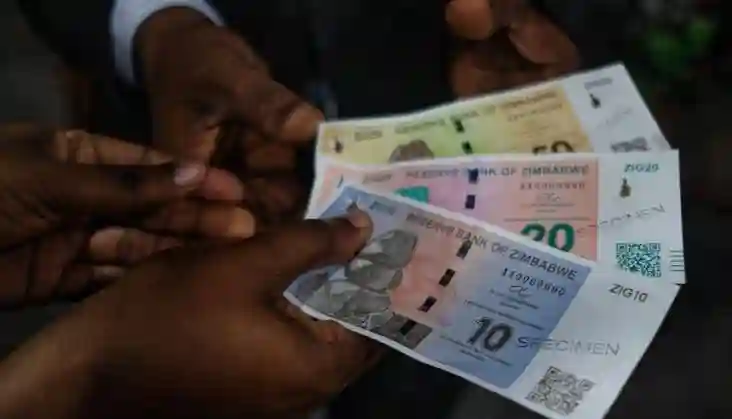Zimbabwe’s new currency, Zimbabwe Gold (ZiG), on Monday, 06 May, weakened to its lowest level against the US dollar since it was launched last month, further raising concerns about the long-term viability of the gold-backed currency.
Data by the Reserve Bank of Zimbabwe (RBZ) yesterday shows the currency was trading at 13.67 to the US dollar, a decline of 0.8% from its first day of trading at 13.56 per dollar on April 8.
Crispus Nyaga, writing for invezz, outlines several factors that contributed to ZiG’s decline. He wrote:
First, many Zimbabweans are afraid of getting involved in this experiment since they have been burned before. People and businesses that bought and held the previous currencies have seen their purchasing power fall over the years.
Second, this is an experiment that has not been tried in other countries before. The most recent dollar-backed currency was the US dollar. President Richard Nixon ended the dollar peg to curb inflation and the conversion became difficult.
In ZiG’s case, it is unclear what will happen if there is a strong demand for the currency. At the current price, the 2.5 tons of gold are worth over $186 million, bringing the total holdings to $286 million. These funds are barely enough to back the currency.
Third, the ZiG token is different from other backed assets, including stablecoins. In the case of a stablecoin like Tether, users redeem their USDT tokens with fiat currency instantly. It is not possible to redeem any amount of ZiG tokens for gold or US dollar equivalent.
It is also unclear whether Zimbabwe’s neighbouring countries like South Africa, Zambia, and Mozambique will accept the ZiG currency.
Finally, Zimbabwe is mostly a dollar-based economy. Data shows that the greenback is used in over 80% of all transactions in the country.
Last month, the Central Bank said ZiG was not yet recognised internationally and could not be used to make international payments as it has not yet achieved convertibility. It said:
ZiG is a local currency that has just been launched and has not yet achieved convertibility. The Bank will work to strengthen the currency to attain full convertibility, consistent with the regional agenda for macroeconomic convergence under the SADC Protocol on Finance and Investment.
ZiG replaced the Real Time Gross Settlement Dollar (RTGS) and subsequently the Zimbabwe dollar, which lost about 80% of its value this year alone and had been trading at 28,720 to US$1 before the change.
It is Zimbabwe’s sixth attempt to have a stable currency. The previous Zimbabwe dollar was launched in 2019 and collapsed this year.
More: Pindula News

